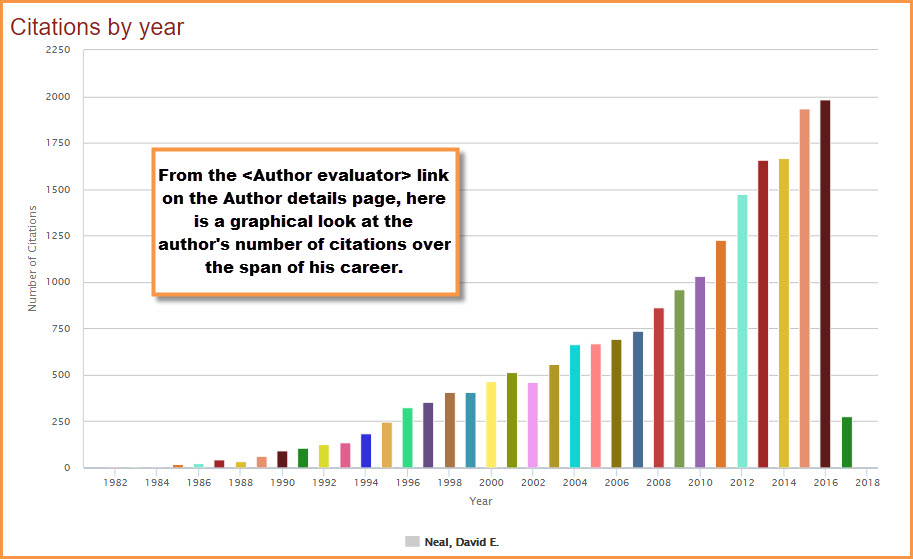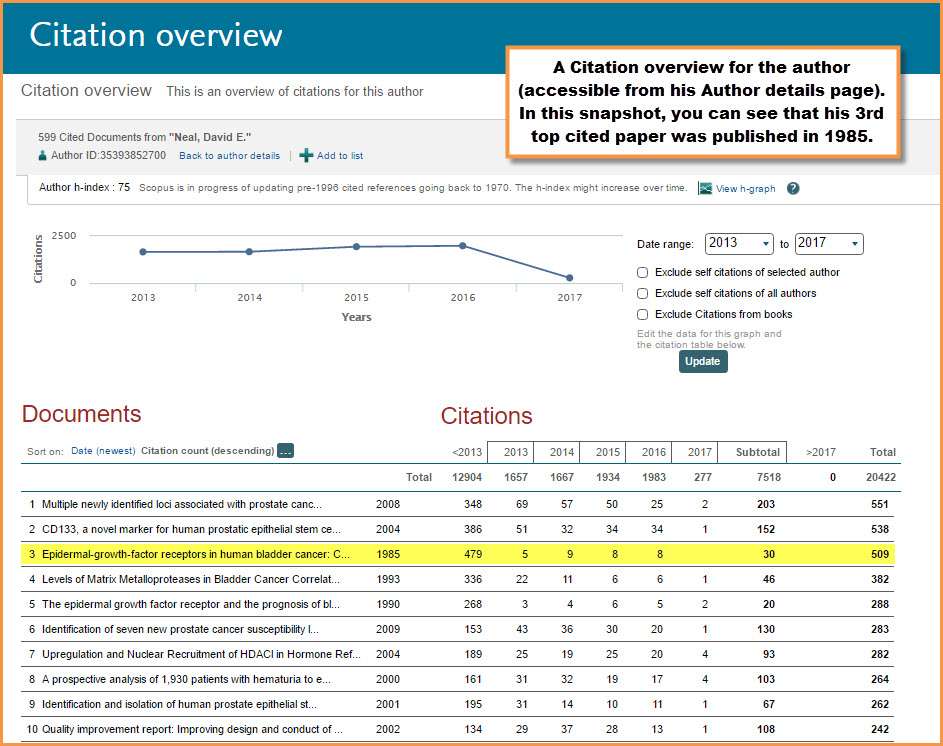Cited references in Scopus go back to 1970: A quick look at the impact on h-index
Over the past 3 years, Scopus content has significantly increased in depth. In addition to already including content records back to 1823, Scopus has added over 160 million cited references to its database, dating back to 1970. This allows you to construct long-term, extensive bibliometric and historic trend analyses, and has resulted in more complete author profiles and h-index measurements for individuals who began publishing prior to 1996.
Early into the cited reference expansion program, we shared an example of how the addition of pre-1996 cited references impacted the h-index of senior researcher, David Neal. Prior to the expansion program, a portion of his 113 documents published prior to 1996 would not have been included in his overall citation count and thus his h-index would be negatively impacted. 7 Months into the project, approximately 3,146 citations were added to his overall citation count resulting in his h-index increasing to 67. Now, with the project almost at completion, a total of approximately 4,413 citations have been added and his h-index is currently 75.
The case of David Neal is just one example of the difference the Cited Reference Expansion Program has made. Look for more examples in future posts.
To learn more facts about Scopus content and what’s planned, watch this webinar.
Quick facts on Scopus numbers now:
- Total items indexed in Scopus = over 66 million
- Number of serial titles (journals, trade journals and book series): 22,748
- Number of books indexed: 140,000
- Oldest item in Scopus dates back to 1823
- Cited references go back to 1970
Related resources:
Read the Library Connect article explaining h-index
Follow these quick tips & tricks for using search in Scopus
See the original press release about the Scopus Cited References Expansion Program



